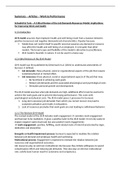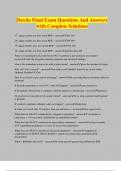Resume
Summary Article & Knowledge Clips - Work & Performance - Master SHOP UU
- Cours
- Établissement
Summary of the articles and the knowledge clips for the Work & Performance Course for the master Social, Health & Organisational Psychology at Utrecht University.
[Montrer plus]












